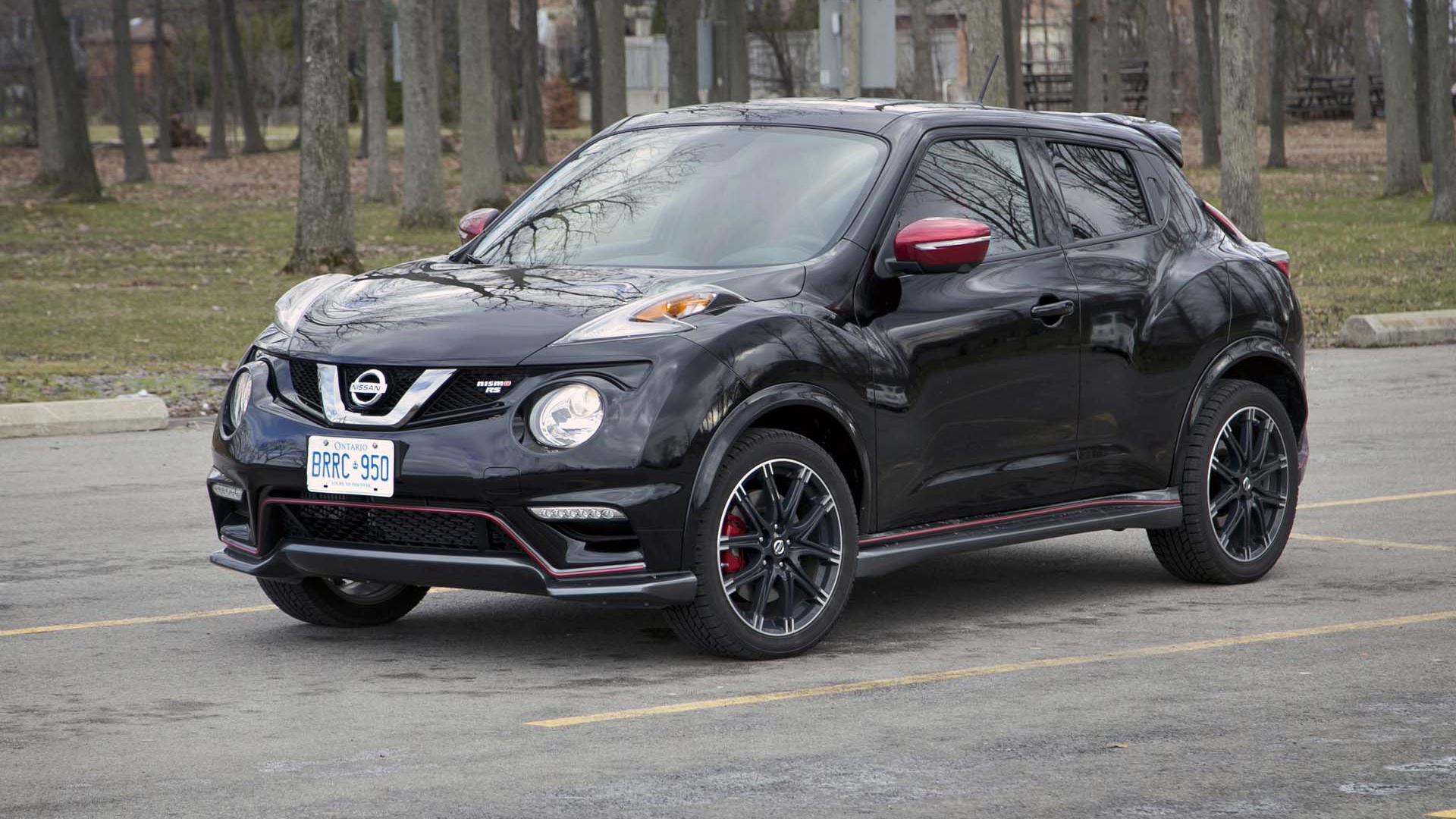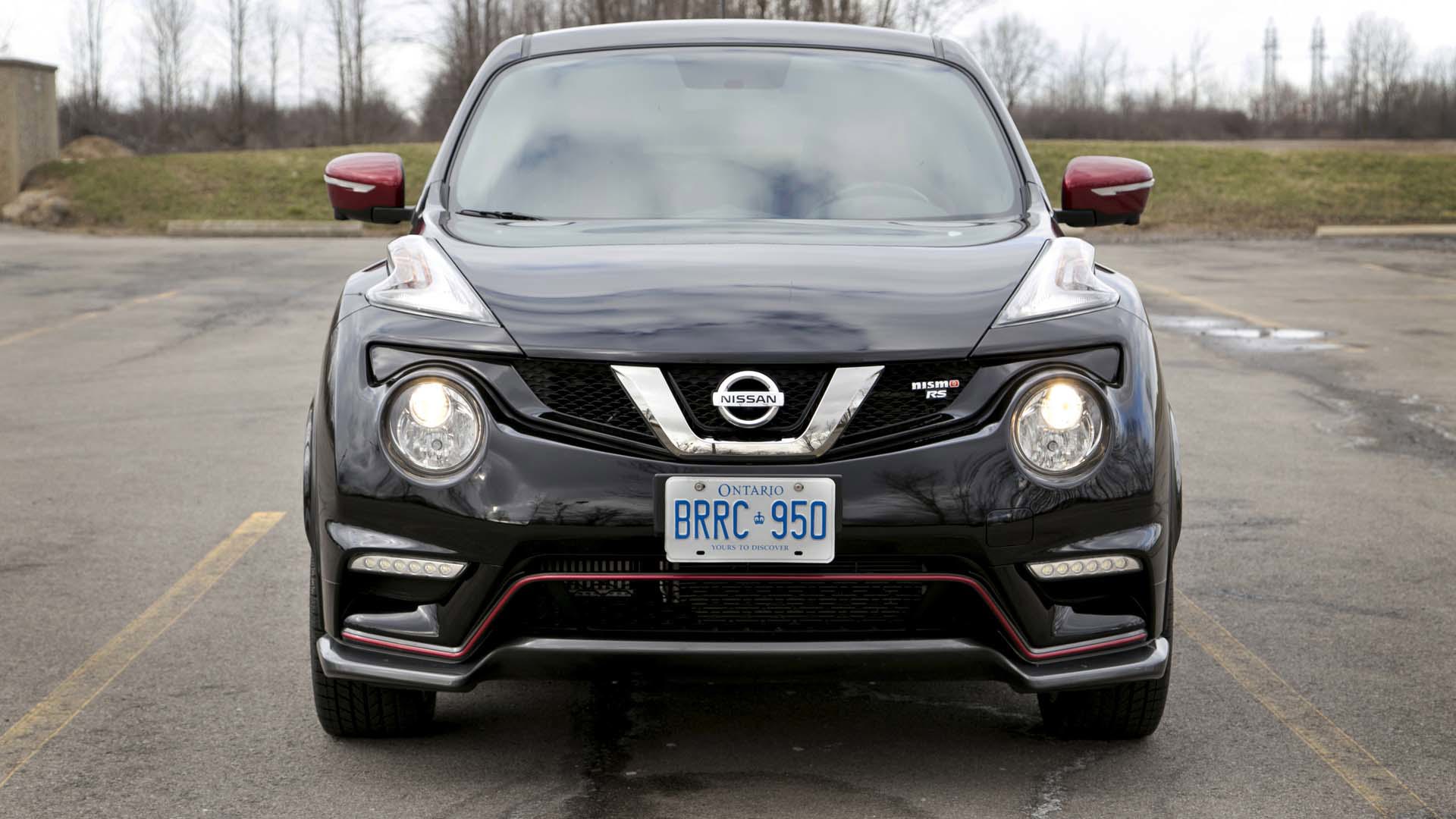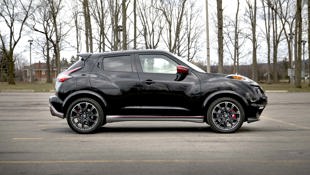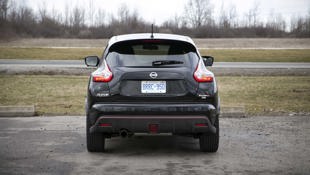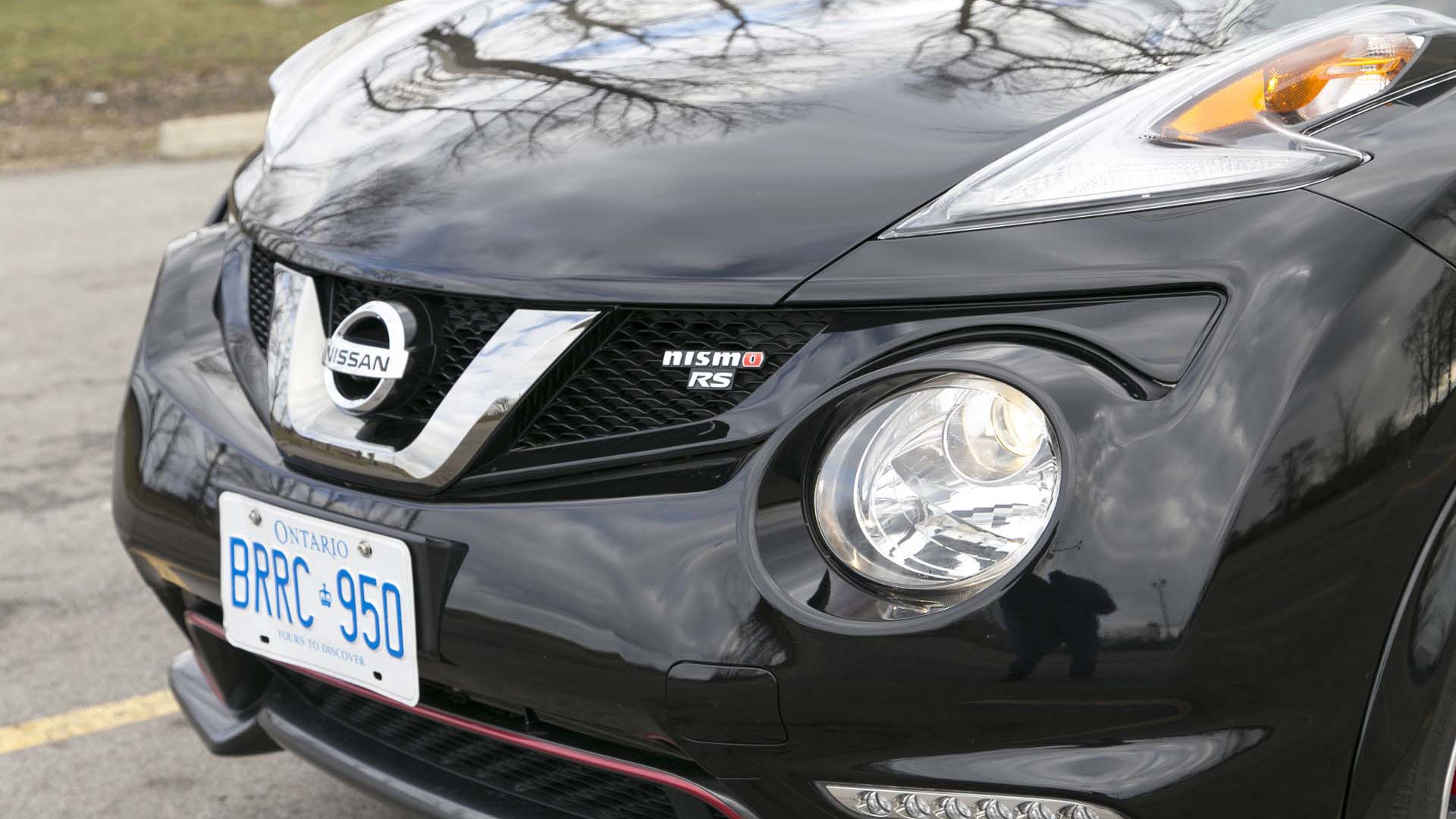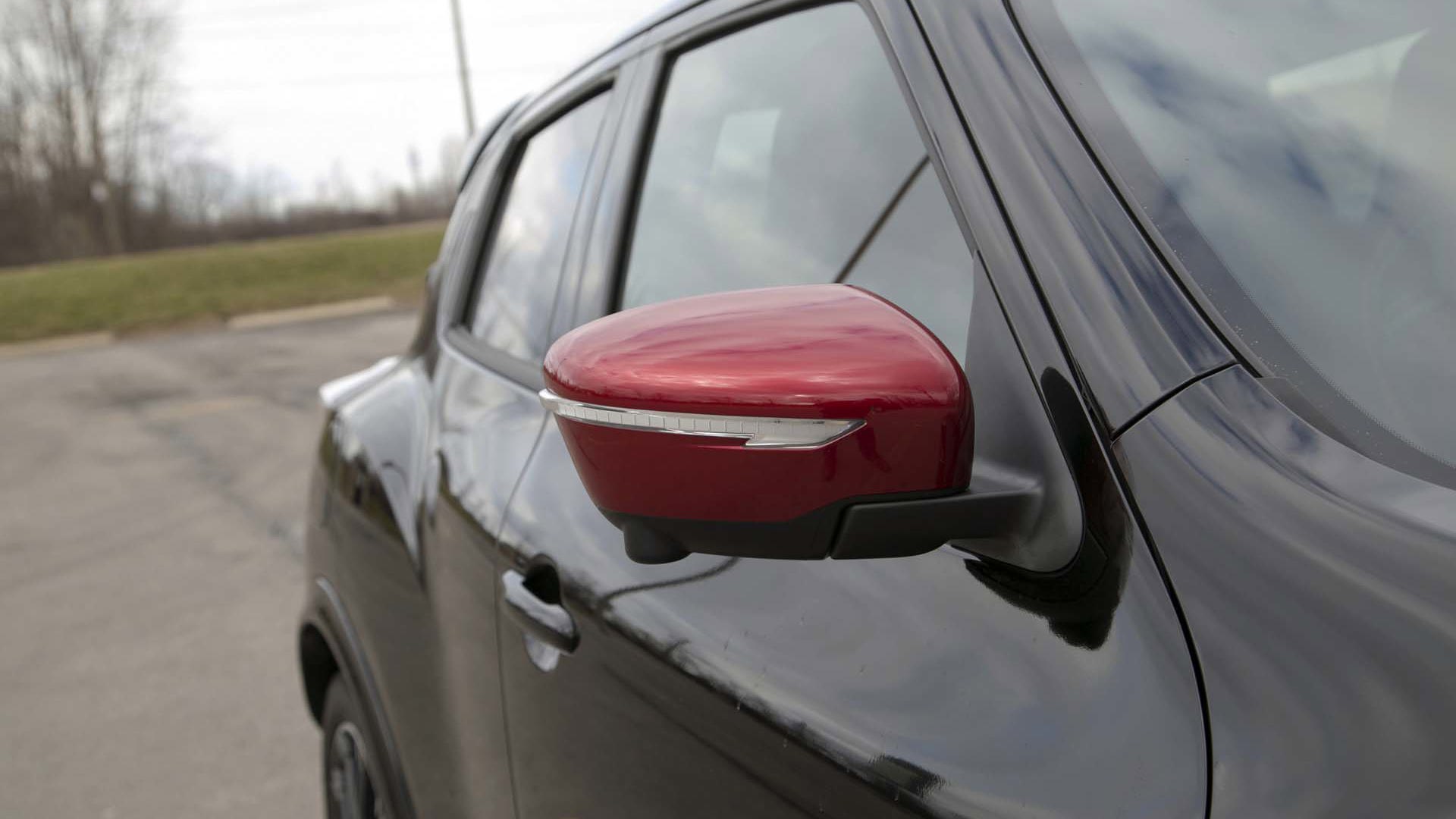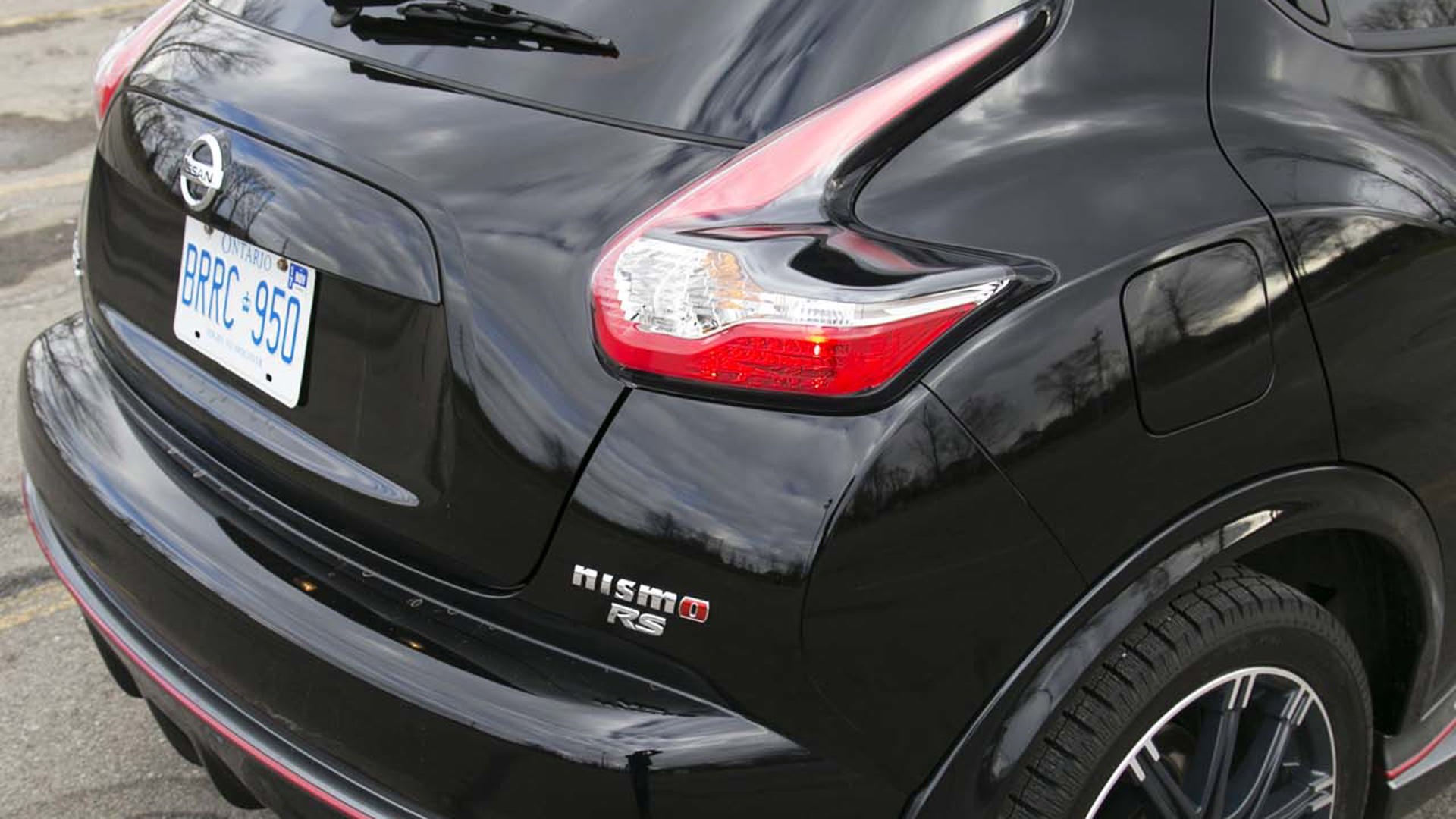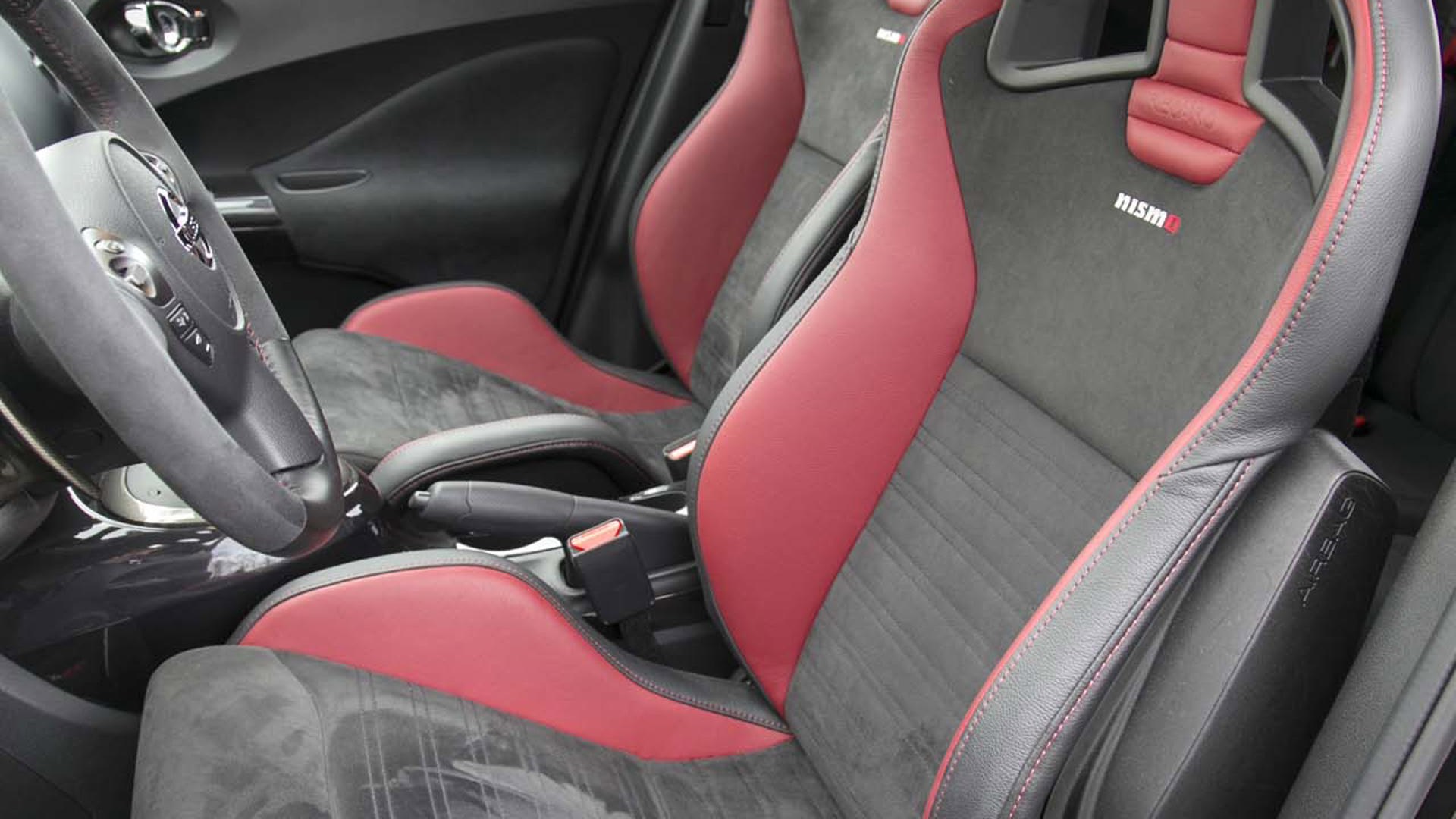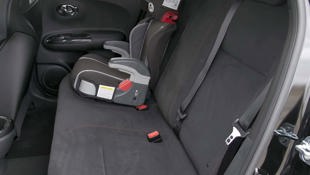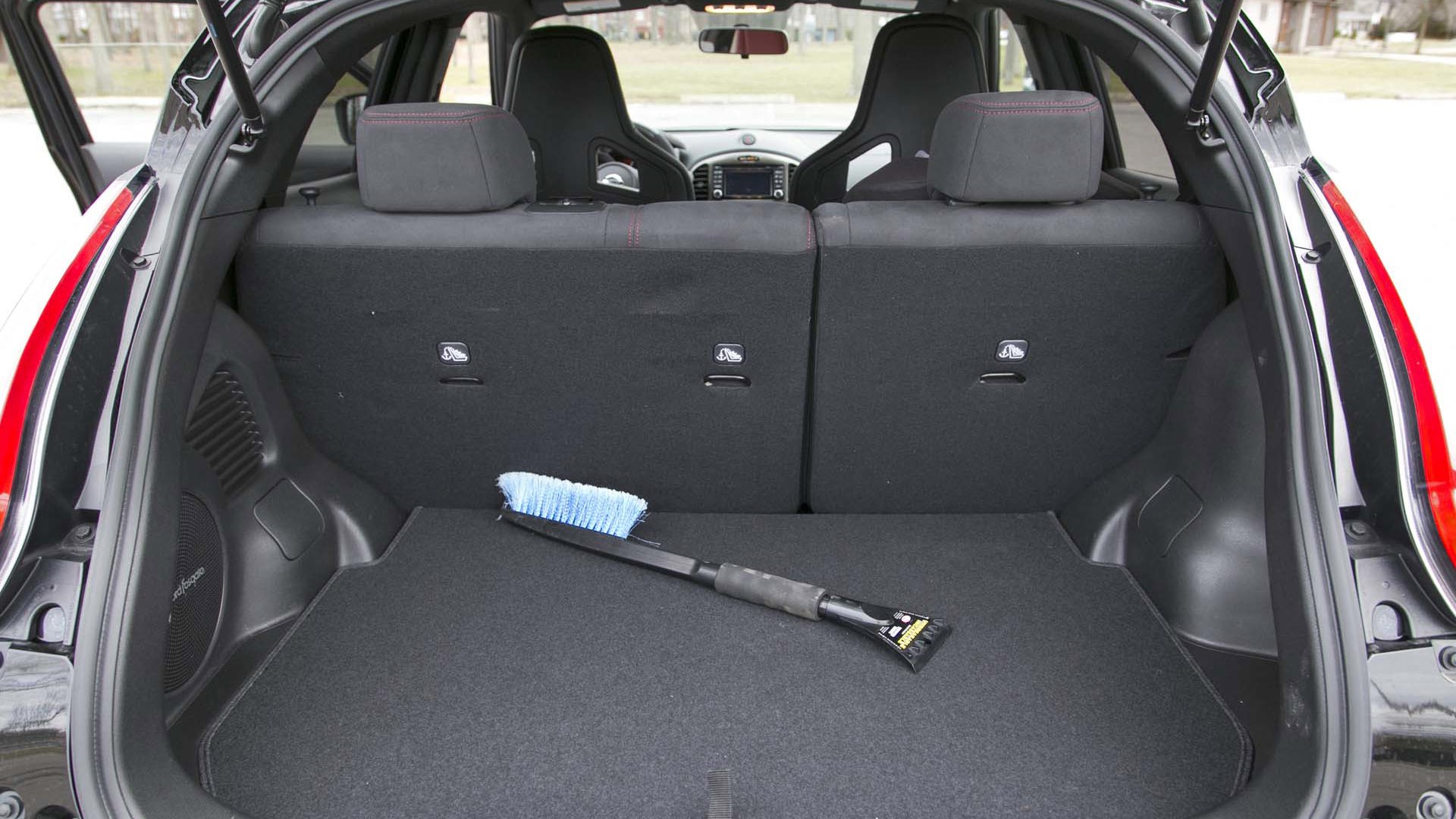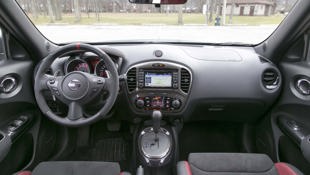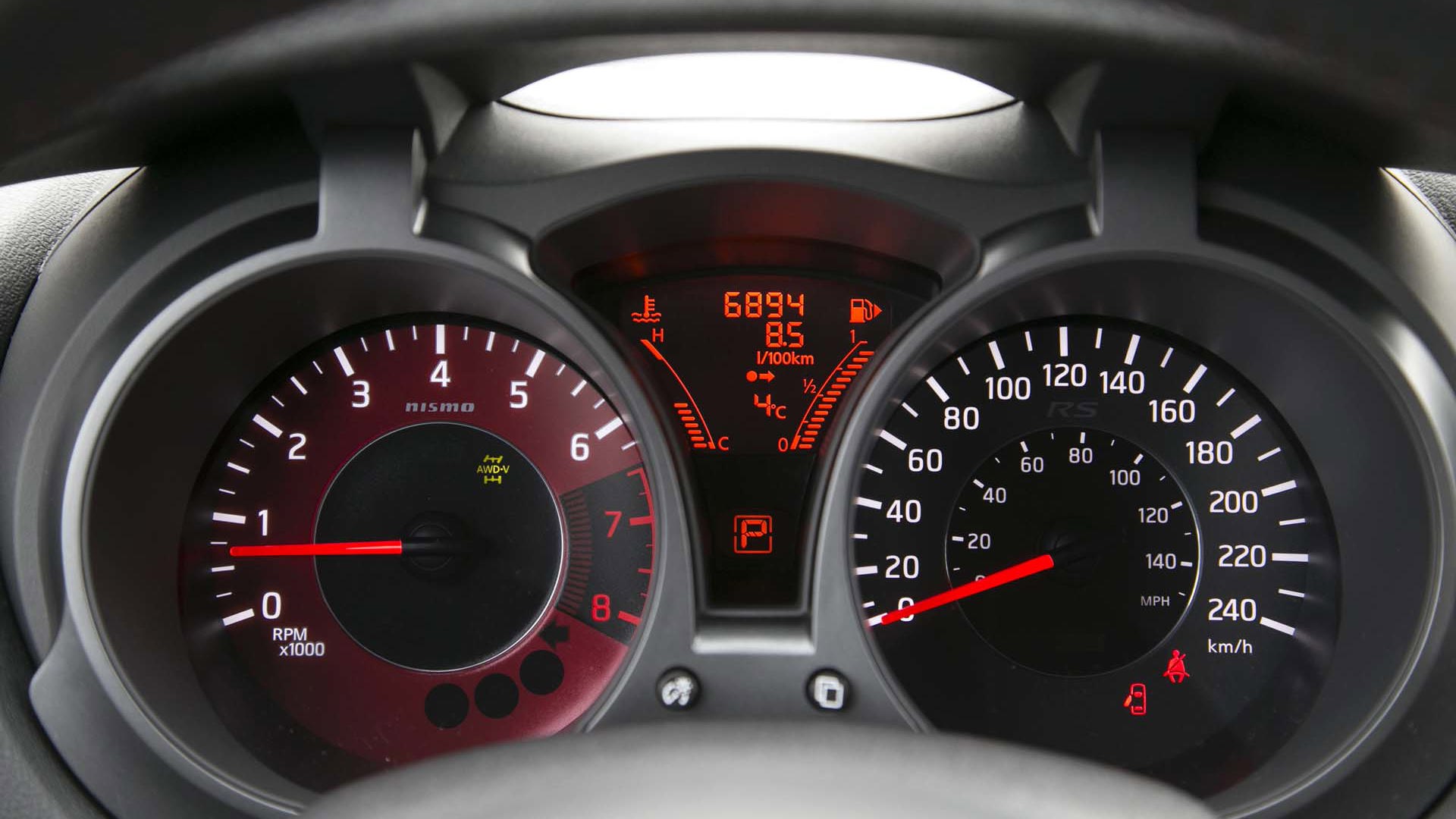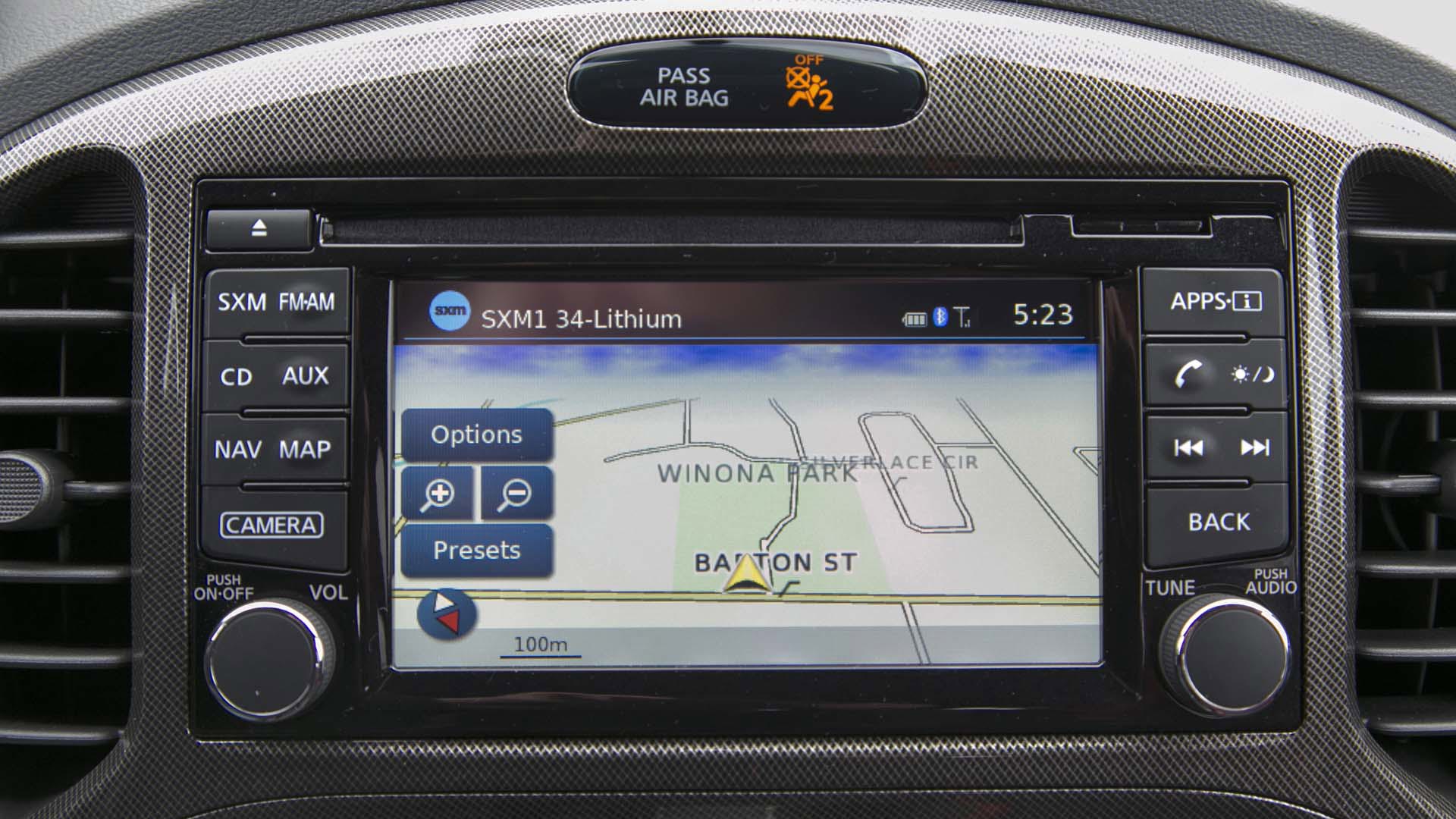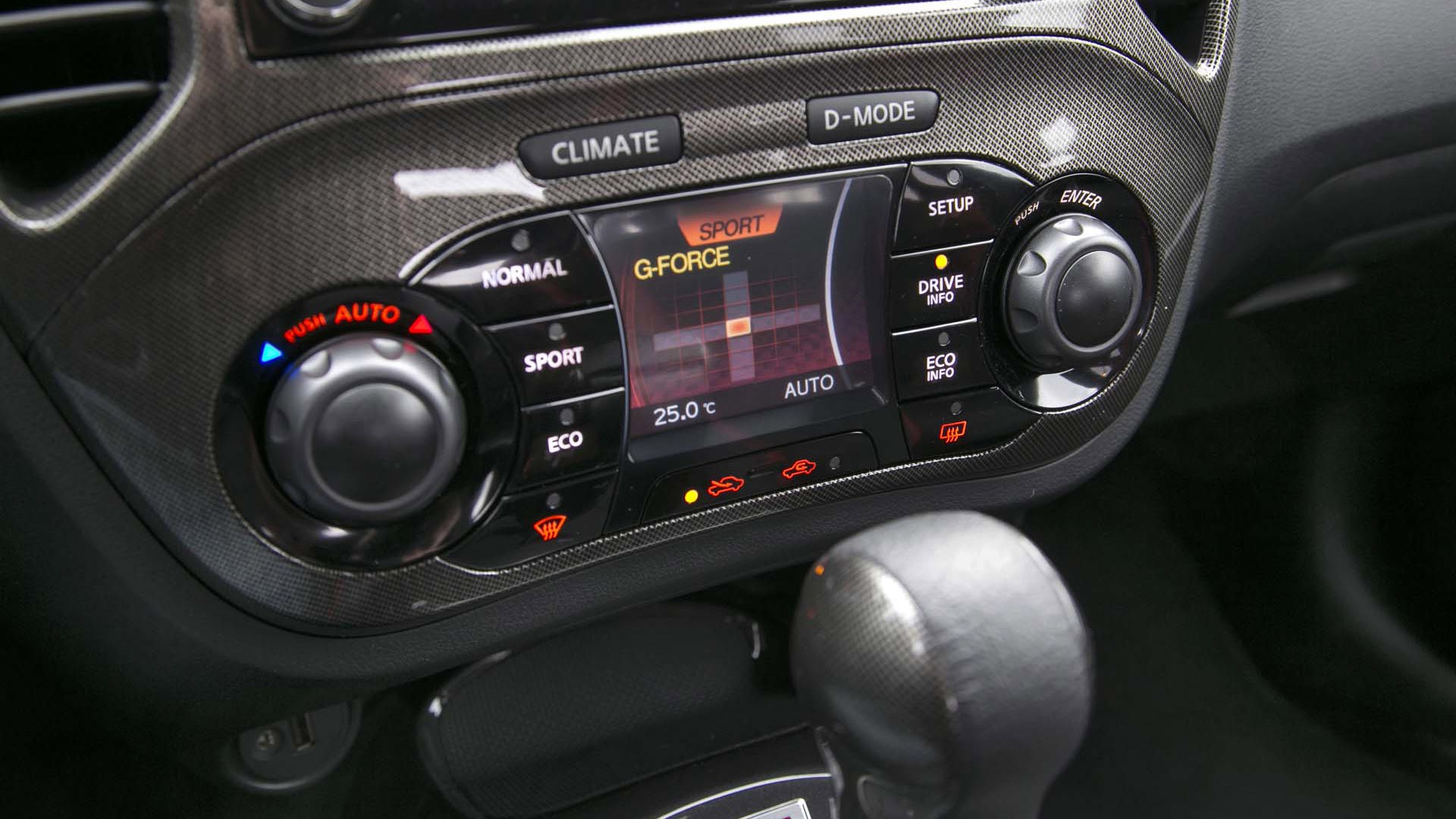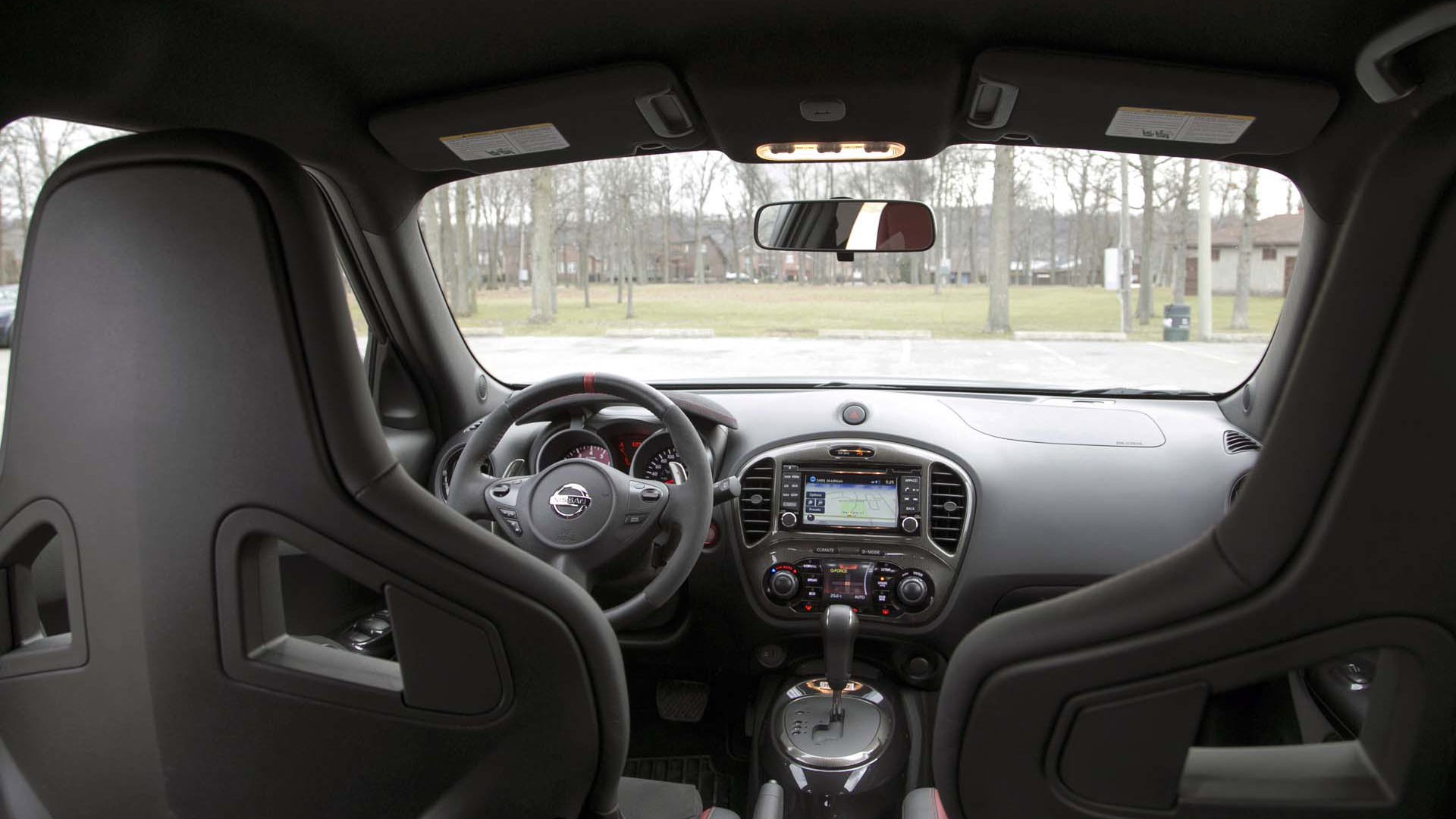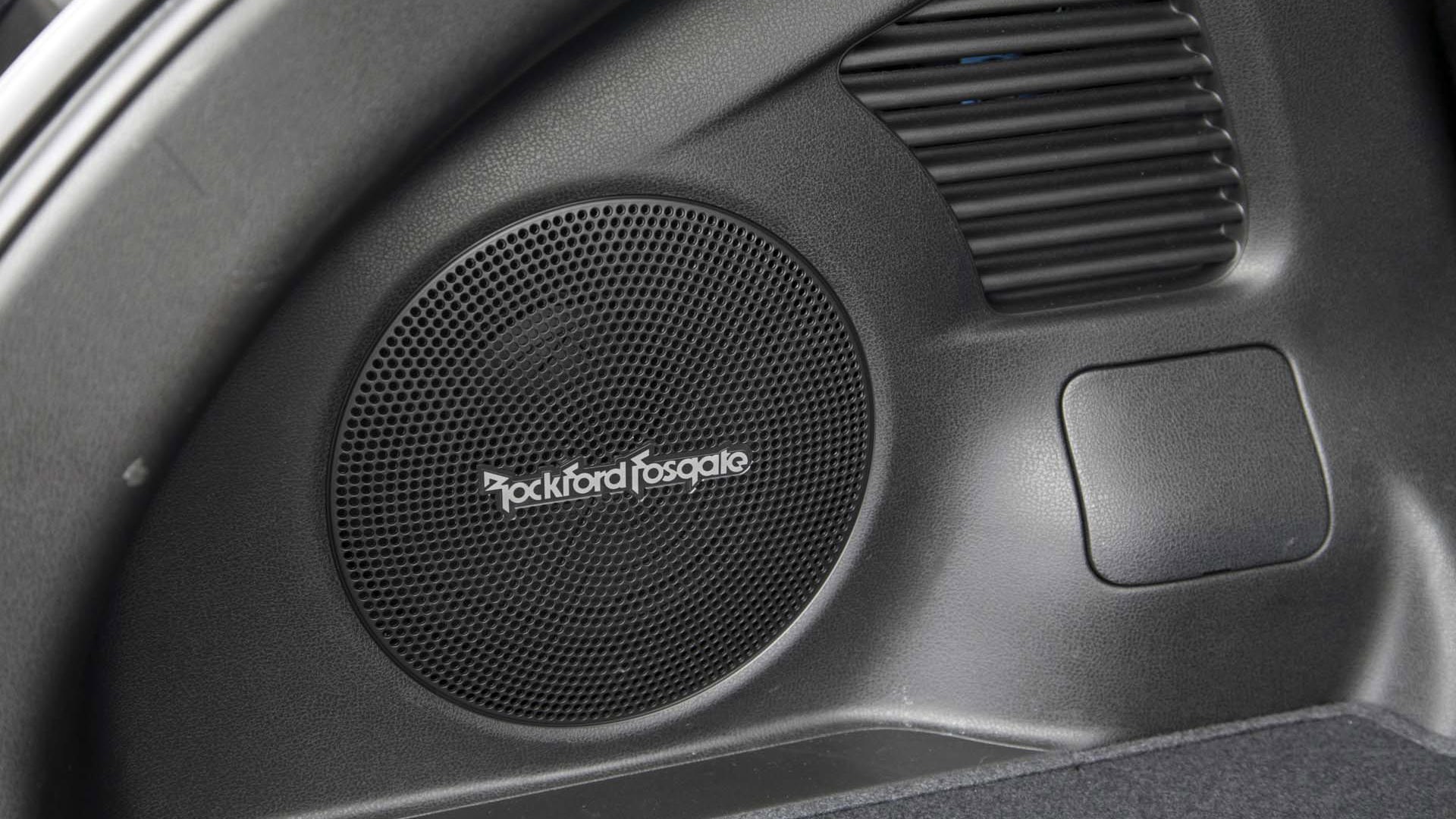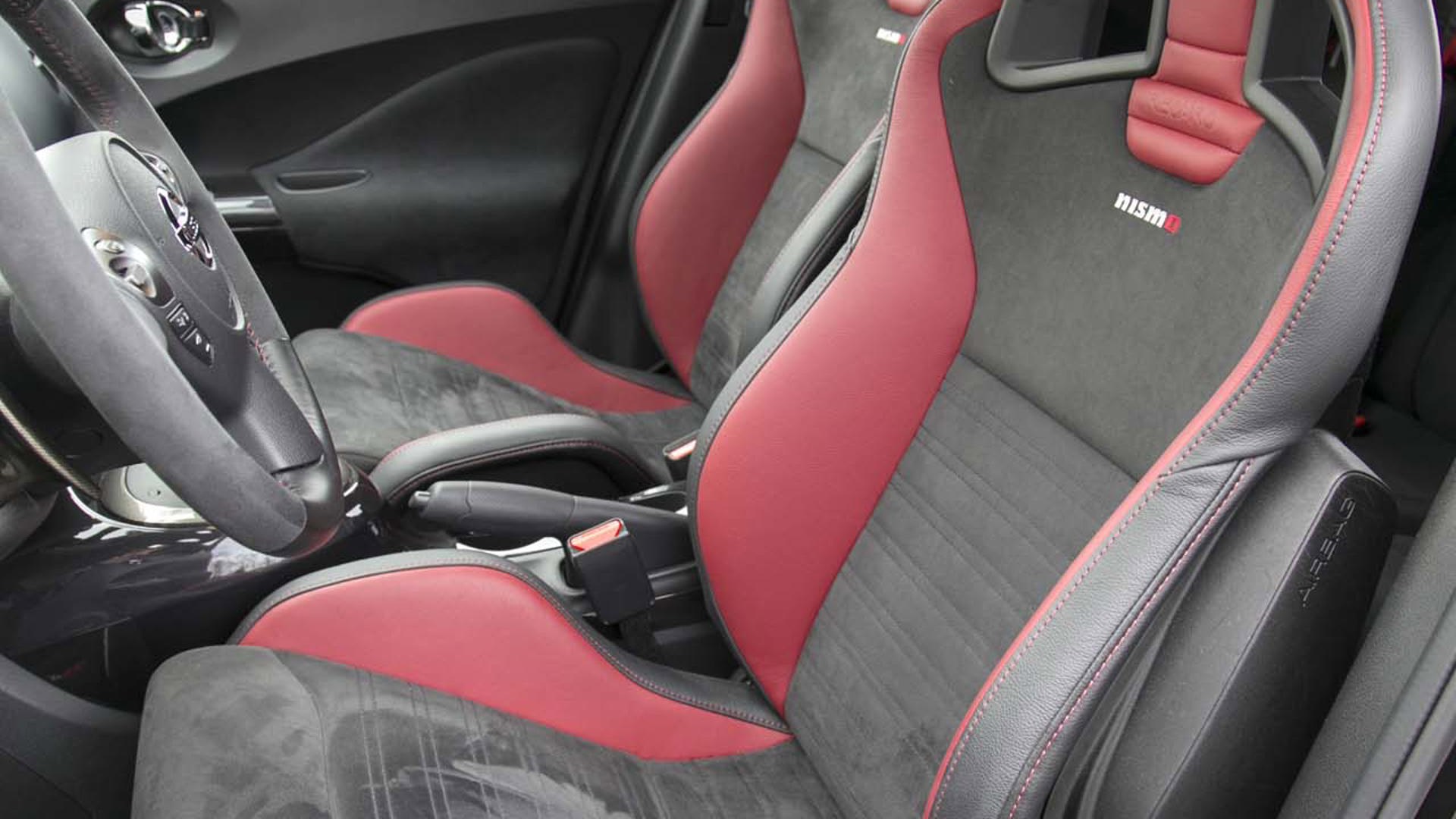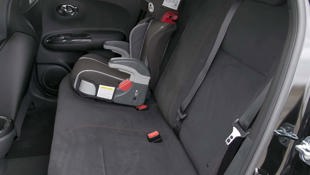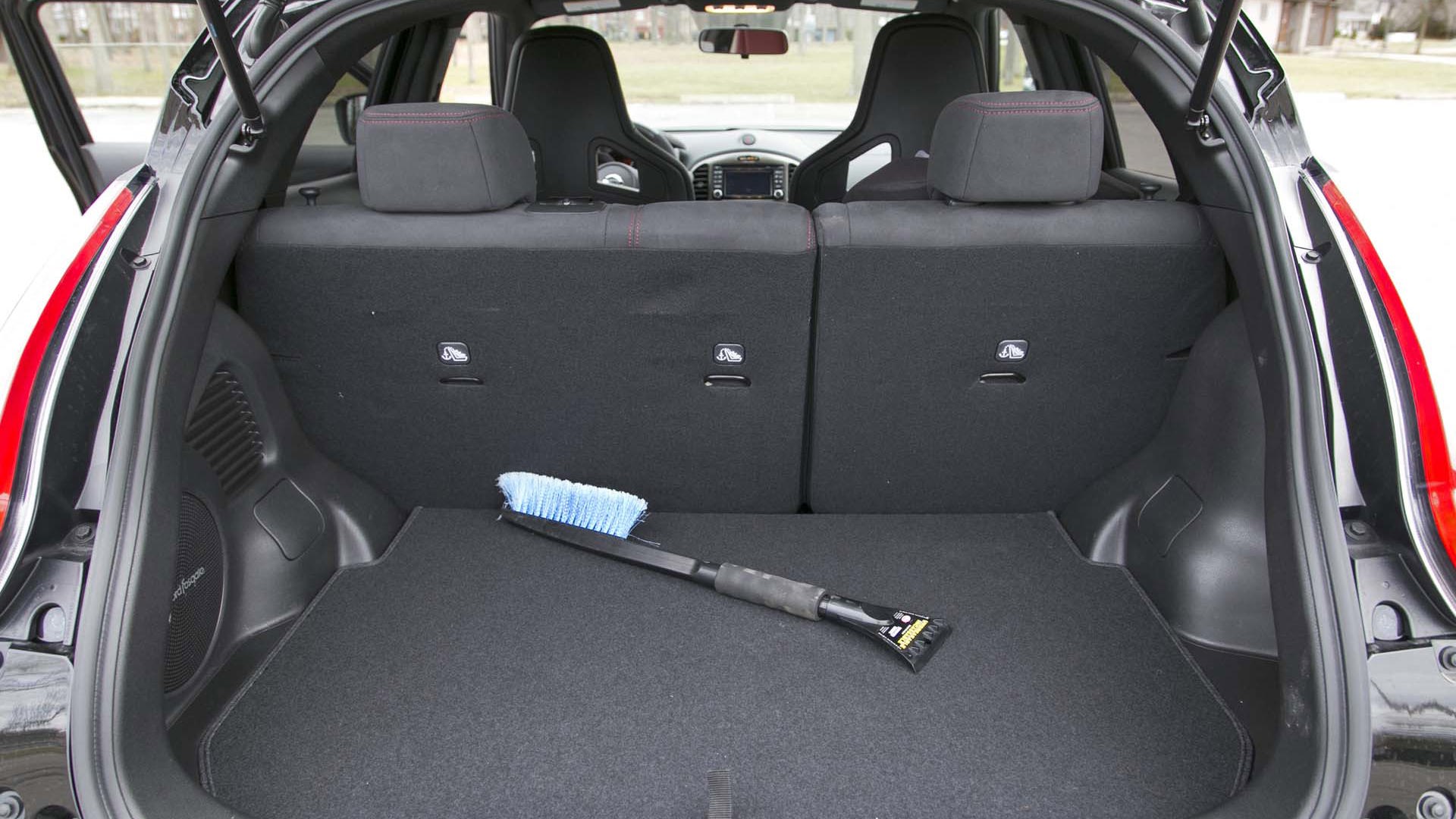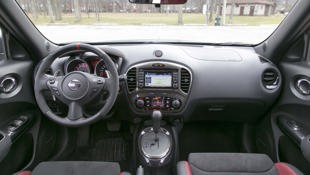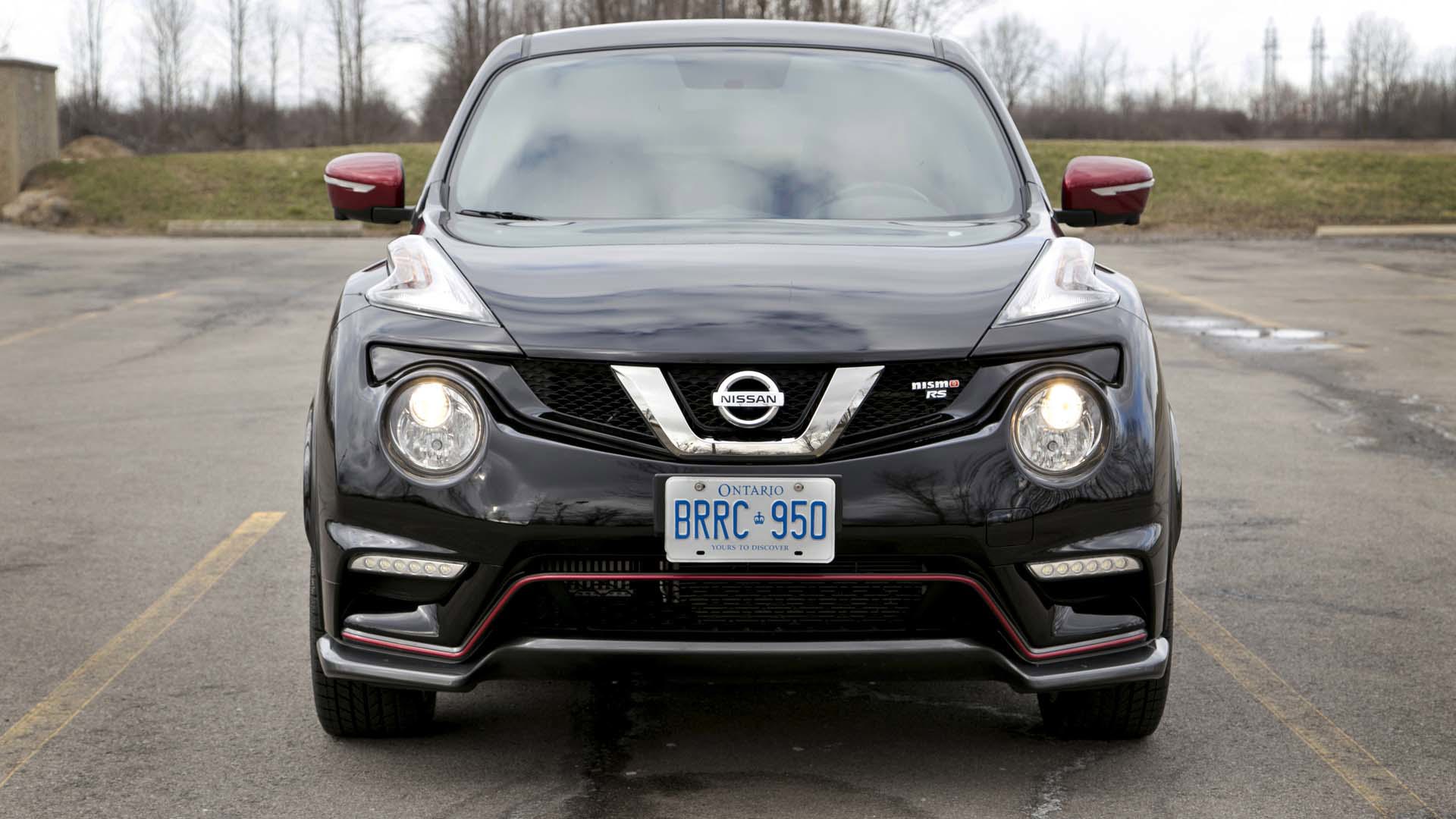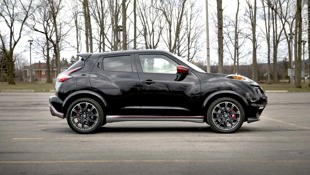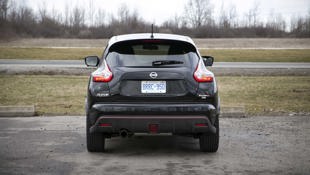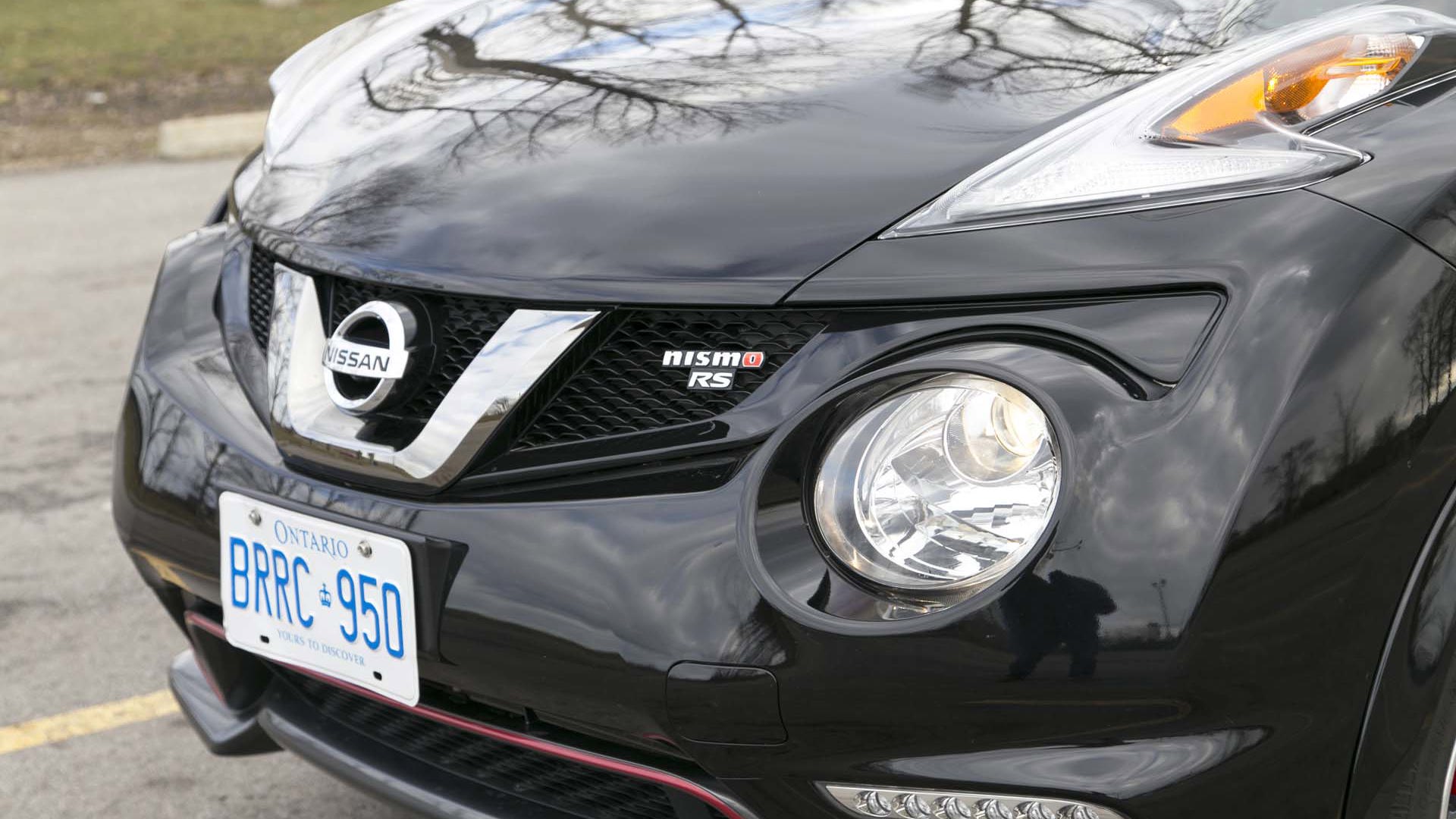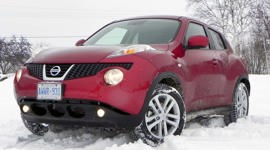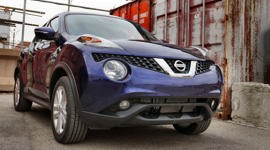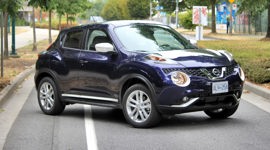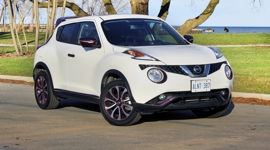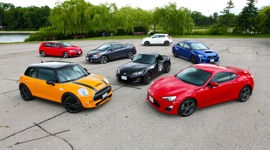 AutoTrader SCORE
AutoTrader SCORE
-
EXTERIOR STYLING5/10
-
INTERIOR6/10
-
PERFORMANCE6/10
-
COMFORT6/10
-
FUEL ECONOMY7/10
They say that looks don’t count for much but in the case of Nissan’s Juke, they matter a whole lot. How could they not? Have you laid eyes on this thing?
Love it or hate it, the Juke’s appearance is its most significant asset (or liability), deliberately styled to generate attention.
Love it or hate it, the Juke’s appearance is its most significant asset (or liability), deliberately styled to generate attention. In fact, the Juke’s unique appearance matters so much that Nissan offers a palette of colours to help customize lesser Jukes like the one Peter Bleakney drove last year that featured purple trim bits. Yikes.
The Juke Nismo RS tested here is the top dog in the Juke line up (ridiculous Juke R with its Nissan GT-R supercar mechanicals notwithstanding) and is dressed to look the most badass of the family. Admittedly the Nismo group did a good job making the awkward little crossover look pretty butch with big, black wheels, and a collection of splitters, spoilers and skirts highlighted by red accents. It’s the sort of car that looks like it should sound like… well, like it has a fire-breathing GT-R drivetrain in it.
As a forty-year-old dad, I found myself a little self-conscious driving it around town, feeling the gaze of every souped-up Civic and GTI driver. With its Pokémon styling, I figured my son would think it was pretty cool when I picked him up from school. Instead he stopped in his tracks, looked at it and said, “Is that what you’re driving, dad? I sure hope nobody sees us.” So the Juke creates image problems even for six year olds.
But suppose, like a few people in my neighbourhood who own one, you’re enamored by the Juke’s polarizing styling, what kind of car are you getting beneath all that “style”?
Well, you’re getting a compact crossover that doesn’t really seem to know what it wants to be when it finally grows up. Inside, it’s decked out with some seriously cool performance car kit like an Alcantara-wrapped steering wheel (with requisite wheel-top red marking for when you’re ripping up the back roads, rally-style and get all crossed up), and faux-suede-covered Recaro sport seats.
A moment, please, about those seats, if you’ll permit it. Senior Editor Jonathan Yarkony warned me that these seats could be troublesome for gentlemen entering the car if special care isn’t taken. Taking heed of the warning, I cautiously contorted myself into the Juke every time, protecting my unmentionables. Except for that one time, when, with a lot of my mind and in a hurry to get to my next destination, I swung open the door and flopped rapidly down into the seat, sitting half on the very aggressive – and most unyielding – side bolster sending an instantaneous and very clear message to my brain that a significant unpleasantness had just befallen my precious jewels.
Once safely seated, however, the Recaros are supportive and comfortable, especially for people of fairly slender stature such as yours truly. Huskier individuals will likely find the seats far too confining. A pair of large, round gauges with bold, white letters face the driver, the tach finished in a racy red colour on this RS model. An archaic digital display is squeezed between the two gauges and cycles between a few rudimentary trip computer functions, in addition to small graphics for temperature and fuel level.
The centre console has a small, low-resolution infotainment display that’s flanked by helpful buttons and knobs. The screen itself offers touch functionality and all in all, it’s a good, simple system to use. Plus, the stereo is boosted by Rockford Fosgate speakers and a subwoofer that create some serious thump, causing the rearview mirror to dance with the beat of most songs, even when turned up halfway.
Nissan does a great job integrating a slew of cameras scattered around the exterior of the Juke to create an overhead view of the vehicle when parking (as well as a traditional rear-view look). If you can’t place this thing perfectly in a parking space, you’d better clean your glasses or leave the driving to someone else.
Beneath the infotainment panel sits a small secondary display window revealing different performance metrics in a comically useless way. The G-Meter, for instance, has three increments and no reference points, presenting only maximum G-reading for the slightest of turn, accelerate or braking movement. It’ll also give economy readings when the Eco button is pushed or “torque” when Normal mode is chosen.
There’s an abundance of cheap looking – and feeling – plastics around the cabin, most notably the hard, shiny slab across the top of the dashboard.
Access to the rear seat is through a pair of small rear doors opening to a dark and claustrophobic space. The rear cargo area affords decent depth, but the height is impacted by the steeply raked backlight and hatch angle and measures only 297 L with the seat up. Seats folded, that figure grows to a more usable 1,017 L.
These are happy times for enthusiasts of compact performance cars. Seems every manufacturer is getting their piece of the action and some of the offerings are remarkably fun. Nissan’s Juke NISMO RS is more flamboyantly styled than any of the others, but its driving experience falls short of its braggart body.
In NISMO trim, the Juke still utilizes a 1.6 L turbocharged four-cylinder with the boost turned up to help squeeze out 211 hp. Torque is listed at 184 lb-ft, which is notably lower than the last Juke NISMO we tested last year in front-wheel-drive set up (versus our AWD here). It seems the CVT fitted to all AWD Jukes is incapable managing the full fury of 210 lb-ft of torque, hence the down-tuning.
It’s still adequate power to scoot the little Nissan up to highway speeds ahead of most of the crossovers and econo-boxes, but only once the elastic-band-ride of turbo lag has been overcome. The sound emitted by the little four-banger sounds like a construction-grade saw of some sort as it revs – then holds its revs thanks to the CVT – until the Juke reaches the driver’s desired speed.
The primary benefit of incorporating a CVT transmission is for fuel efficiency, which makes its application in a supposed performance machine questionable at best. Our Juke delivered an indicated average consumption rate of 9.6L / 100 km with 2/3 city and 1/3 highway driving – a figure above the government’s estimate of 9.4 city and 8.1 highway.
With Sport mode selected and the shift lever moved over to the + and – gate, the paddle shifters behind the steering wheel can be used to replicate eight “gears” as the engine revs and steps more akin to a traditional performance car. In this mode the driving experience is slightly sportier and less gnawing on the eardrums, but still nowhere near as pleasing or engaging as most of the Juke’s hot-hatch competitors.
When it comes time to rein the little Juke in, the NISMO-specific 12.6-inch front and 11.5-inch rear vented disc brakes do an adequate job, but the pedal feel is a bit soft.
Steering feel is muted as well, though in fairness due to the season, our Juke wore a set of fairly aggressive Toyo snow tires that surely contributed to a lack of sharpness through the steering column. Any proper assessment of the Juke’s handling was stymied a bit by a nasty ice storm that hit the week of our test. That said, a few clear on and off ramps revealed some initial roly-poliness, though for what’s really a compact SUV, it’s managed well with the NISMO-tuned suspension set up. Once it takes a set, the Juke is reasonably composed and the torque vectoring system helps put the power down where it’s needed. Only the FWD NISMO RS gets the helical limited-slip differential.
So, the Juke NISMO RS is not a full-bore compact sporting machine, fair enough. When it comes to compact hatchbacks with all-wheel drive and even a bit of sporting pretense, the list of alternatives gets pretty short, especially at this Juke’s $32,000 price point. Subaru’s WRX no longer has a hatchback, so a more run-of-the-mill Impreza would be one choice. A Mini Paceman would be another, and like the Impreza, still offers more engaging driving experience than the Juke. For those willing to pass up all-wheel drive, there are plenty of interesting machines around the Juke’s price point as we showcased last year in our everyday fun car comparison test.
Nissan should be lauded for having the gumption to offer a car as bold as the Juke, but unfortunately, even in top-spec Nismo RS AWD guise, it simply doesn’t live up to the hype of its appearance.
| Warranty: 3 years/60,000 km; 5 years/100,000 km powertrain; 5 years/unlimited distance corrosion perforation; 3 years/60,000 km roadside assistance Competitors: |
| Model Tested | 2016 Nissan Juke NISMO RS AWD |
|---|---|
| Base Price | $31,998 |
| A/C Tax | $100 |
| Destination Fee | $1,700 |
| Price as Tested | $33,798 |
|
Optional Equipment
None
|
|
